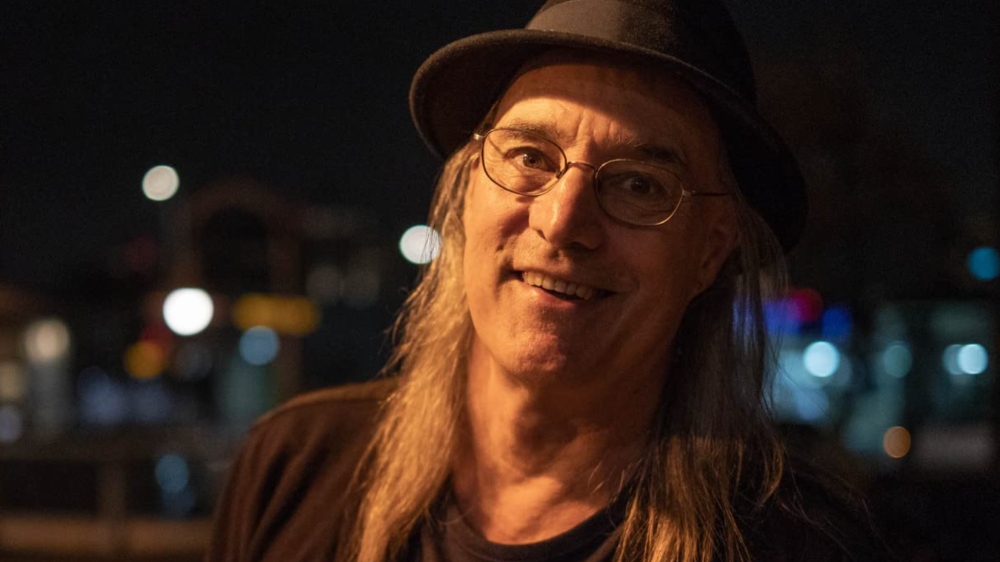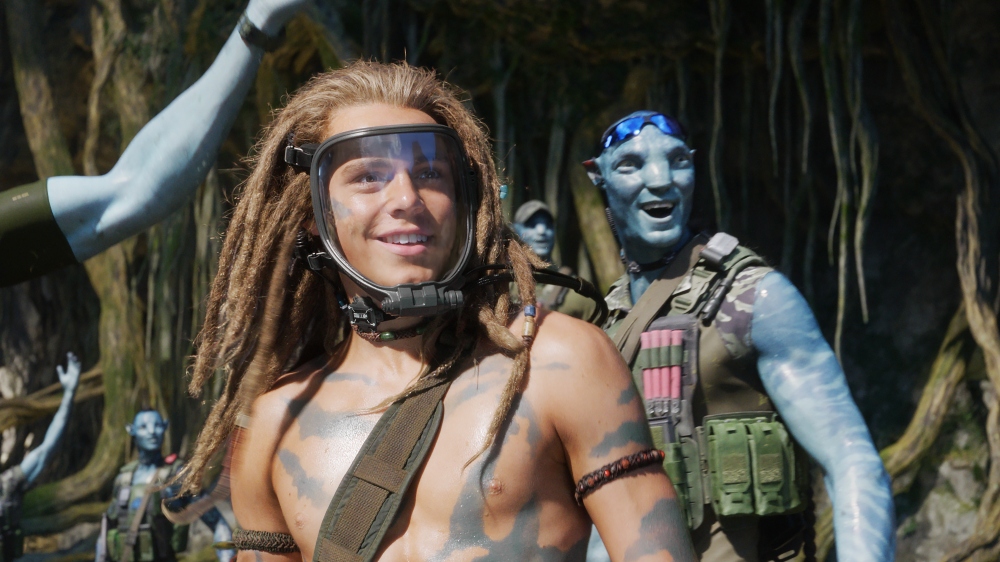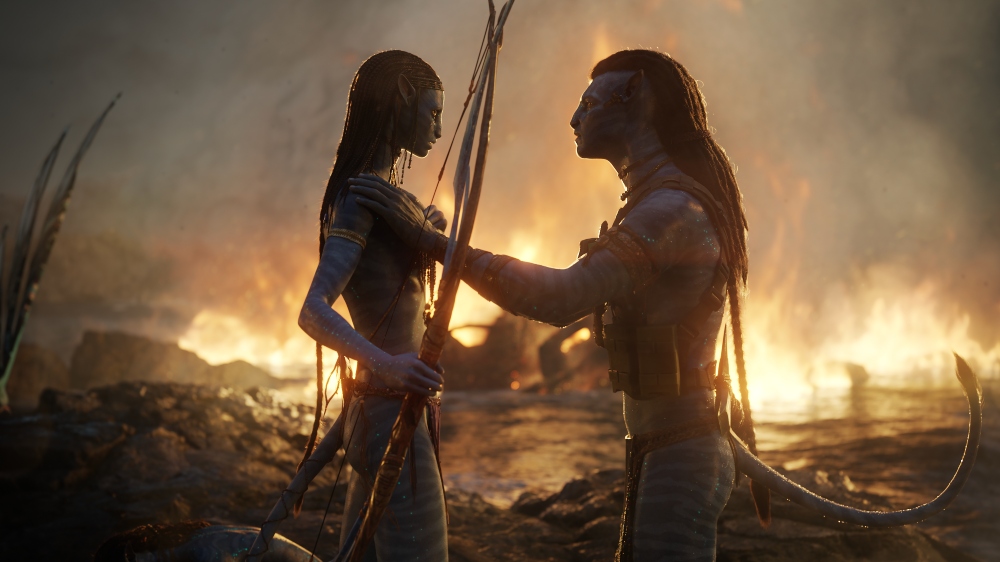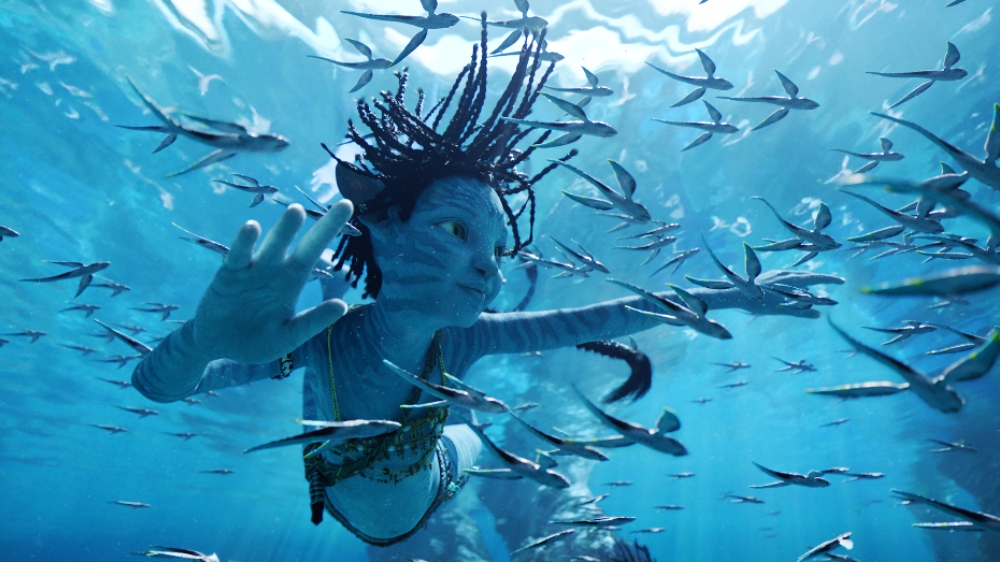Director James Cameron last worked with Cinematographer Russell Carpenter 25 years ago on Titanic, the Best Picture winner that brought both men individual Oscars as well. Following the success of the first Avatar, which was shot by Mauro Fiore, Cameron decided to reteam with his former director of photography, who first worked with him on True Lies. Carpenter was eager to book a trip to Pandora, where he made tremendous use of virtual cameras and carefully designed scenes and sets to create an authentic and immersive visual experience.
Below the Line recently spoke to Carpenter about getting up to speed on Cameron’s vision for Pandora and the many challenges and opportunities presented by working with so many different departments to craft a cohesive feel for the film and the next sequel in the blockbuster franchise. He shared details of the technical process and where he came in to complement Cameron’s direction.
Carpenter also touched on the difficulty of pausing and then restarting filming across the globe during COVID, and he marveled at how many different theatrical formats it has been prepared for, all of which are equally satisfying, he assures.

Below the Line: You worked with Jim on True Lies and Titanic, but obviously, there was a different DP, Mauro Fiore, who shot the original Avatar. Did you feel like you were stepping into his shoes a bit, or did you feel like Jim guided you sufficiently and gave you enough freedom to do your own thing with the photography?
Russell Carpenter: I have the advantage of there having been a lot of technological advances in terms of what Weta can do. What you can do with lights now has changed. So I think there were things that were easier for me than they might have been for Mauro, but I didn’t think of it as stepping into his shoes. With Jim, I always think, ‘I’ve got to step into this challenge. He’s going to challenge me in so many ways. Don’t screw this up, bring an aesthetic vision that is in line with Jim’s visual language.’ I could get there in many different ways, so that’s a challenge, and then [there are] just numerous technical challenges.
In terms of matching lighting, everything is fluid. Jim can go in and change things in such a way, and maybe he’s rethinking stuff up until the night before we shoot everything. That was one challenge. You’ve got to be on your toes because you can’t just say, ‘I saw this scene three days ago.’ You better be seeing the scene [in case] there have been any changes, especially significant changes. If he’s slightly reblocked, it does change where shadows fall, or maybe where you’d want the direction of your light to come from. This whole film was a moving target. Everything’s in play until you lock it in on the live shooting day.

BTL: I think most people seeing this film won’t even understand the grandeur of what they’re watching and everything that goes into it. I know that a lot has been made of the performance capture, and specifically how the actors had to hold their breath underwater for a long time, but what was your involvement in that process, or did you come in after all that stuff?
Carpenter: I came in after the actors had been captured and after a lot of the virtual underwater stuff had been captured. My experience of shooting underwater is still the same as it was when we did Titanic, which is that it’s a pain in the butt, and it goes slower than you’d want it to. We had very large tanks to shoot in, but I guess what I’m happiest with is that Jim wants a universe that he has total control over [what] it looks like, and he wants to keep a poetry to it, and a power to it.
Everything was shot inside. The scene where Spider emerges from the ocean and climbs up on this big rock in the middle of a bunch of his Na’vi family was shot indoors. I’m really happy with the way it looks because it looks like we were somewhere way out in the ocean. The stuff I’m happiest with is the stuff that I don’t think people are going to say, ‘was that a live-action shot?’ because, basically, you’re marrying Spider, of course, the human being, into a virtual scene that was shot months or maybe years ago, and making it match seamlessly. Jim said, ‘I don’t want 98 percent of seamless, I want more than seamless.’ I feel like my team and I did a really good job of that. If that didn’t look right, a lot of things fall apart.
BTL: I can’t imagine how collaborative this process must have been with so many different people working on the film…
Carpenter: I shot a test for Jim in 2017 that was kind of a replication on stage of a Pandoran forest, which is basically virtual, but I came pretty close to what that would look like. He liked the rendition and he liked that I had basically paid attention to all the notes he had given me about what a Pandoran forest should look like. I think that led to [my] being invited to participate in the film.
The main thing was, hey, I am stepping into a tremendous ecosystem of departments that all will support this picture, but they’re doing somewhat vastly different things and I needed to communicate with them. I needed to draw upon their resources. It’s vastly different than just, ‘okay, here we are on the set, and we’re going to do this scene. And by the end of the day, we’ll know, hey, we got a pretty good scene.’ That is not the pace that the movie worked at, and, in fact, it had so many layers to it that certain things would take months or even years to get to the point where I could step in and start to work on the lighting.

BTL: Can you break down some of the technology used to achieve this film’s distinct look?
Carpenter: Jim was on what’s called the motion capture volume. He’s blocking his shots and he says, ‘okay, I know you’re prepping the film, but what I want you to do is, I want to go live in the lighting department and supervise the lighting scenes.’ He started to give me the scenes that he wanted done, and I didn’t know anything about CGI lighting. The really difficult time of understanding this only lasted a day and a half or so. Once I had familiarized myself with the tools — there was a program called Gazebo, which is an amazing program of lighting in a way that, let’s say, somebody who works in a live-action set could understand, [and it] had a lot of the same tools — I just jumped in, and I did that for about a year.
At the same time, I would go off and prep, but you just learn. You have to play very nicely and communicate with so many different departments. I watch what Jim’s doing on stage as things start to formulate and you start to see solid camera positions from Jim’s virtual camera, which, by the way, kind of matched the sensor size. I mean, it was a virtual sensor size of the Sony Venice, so that, if he used a 25mm lens, we used a 25mm lens. We didn’t have to hop through a bunch of conversions.
Luckily, the things I did in lighting were stored in this Gazebo, which was developed by Weta, and the smart thing they did was make it possible for all this information, from the lighting and all Jim’s information, to travel down this line where all the people who need to see what’s happening can see it, and then you get these scenes lit and then you go through a process of going — especially if you’re shooting live-action sequences that merge with this — ‘okay, how do we make this work?’ Jim’s camera, he can say, ‘I want to move two feet to the right,’ but that can mean a 50-foot camera move, because he can scale it any way he wants, and you’ve got to make sure that what he is doing actually fits inside a soundstage wall.
Everything’s embedded. You can see exactly how high this was, how far the camera moved, how long it took to move, all that stuff, and it is somewhat tedious to go through all that. But it prevents you from making time-consuming mistakes, and when we’re doing the live-action photography, that really helps.
By the time we get to shoot the scene, we have people who can tell us, exactly, all this information, [such as] where the camera has to be. That said, once the live-action camera and virtual camera are somewhat fused, because the computer knows exactly where everything was on the virtual set, and now it knows exactly where our live-action camera is, then actually Jim has a lot of freedom when we’re shooting. Because he did handheld a lot, he can point the camera anywhere, and this system called Simulcam, which is amazing, knows exactly what he should be looking at. So that was great. Thank God there was intelligence that traveled all the way down to where we were filming in New Zealand.

BTL: You shot the third film at the same time as this one. Is that something you’d recommend to other DPs if possible, or does that just make it more difficult?
Carpenter: What I wouldn’t recommend is trying to shoot two films and then having a pandemic come up right in the middle of it. We shot a lot and we came back to the States one time to film underwater photography in this big tank that Jim designed — this big, amazing water tank that was inside a stage. Then we went back to New Zealand and said, ‘okay, it’s time to take a break’ around Christmas, and then in February, COVID hit the fan and it really screwed things up.
Going back to the fact that you have a young actor who was really growing, if you look at the film, you go, ‘he looks slightly different.’ I don’t know if people track that at all, I hope they’re immersed. So, we really felt under the gun. We were all in the United States, and Jim really wanted us back in New Zealand shooting. He was totally feeling this time pressure, and because he has some relationship with New Zealand, because of the films that he’s done there, they went through a lot of hoops, so we got allowed back into New Zealand and we all were tested up to the max. We all wore masks and shields flying to New Zealand. When we got off the plane, we all went into a bus, and we all went to another testing area at the hotel that we stayed in, and they said, ‘welcome to your room. All you have to do is stay inside for two weeks.’ And nobody went out.
Then there’s the pressure… we’re the first people back, and you don’t want to be the people that screw this up for everybody else. Our COVID protocols on stage were followed to the letter, and luckily, when we got back [to] shooting, it didn’t slow us down that much. We were able to pretty much cruise along almost as fast as we would have if we didn’t all have to wear masks and get tested and all this stuff all the time.
BTL: This film is showing in theaters in 3D and IMAX. Do you think those formats are necessary for the immersive experience?
Carpenter: Yes and no. If you want to get on the horse and ride it to where it really wants to go, I would totally see it in 3D, and IMAX would be a wonderful way to go. I actually do think the film is going to work well in 2D. It’s amazing what they did with this film. They’ve got a bunch of different formats they’re releasing it into, formats designed to play very well. They’re tailored to the different venues [where] people are going to be seeing this at. It’s amazing that they have all these different 2D renditions up to the IMAX renditions to play over on different systems because different systems are different systems, and you have to do different things. So they’re totally focused on how this film presents in different viewing venues. I think wherever you go, you’re going to have a good experience.
Avatar: The Way of Water is now playing in theaters worldwide courtesy of 20th Century Studios.





